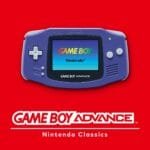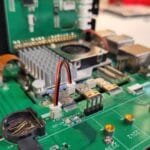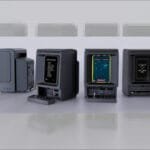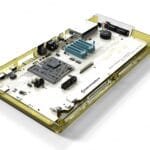John is a former contributor with a collection of interesting retro gaming recollections.
John Bowe looks back at some of the most memorable games in 1996.
1996, that old chestnut. Some great films were released, and perhaps some even better books and music. I expect so. It didn’t matter though, because 1996 was the year that gaming overtook them all, leaping ahead with innovation and that unbridled sense that its time had come; unless you were living outside Japan or the U.S. and were hoping that Nintendo would release the N64 for them that year.
They wouldn’t, but let’s not lower the tone yet, as I feel some sort of rudimentary remembrance upon myself. My case, to be clear, is not just that 1996 was the top-tier year for the games themselves, it was the year for the industry in general, from the fandom all the way up to the gold lining of Yu Suzuki’s pockets.
Let’s start with Nintendo because you could not avoid them that year. It was theirs.
Nintendo vs everyone
It had been clear for a couple of years prior that Nintendo were building up to a new console and games in 1996. They had been promising a new console for some time which deliberately was not going to be the new Sega Saturn or Sony PlayStation. It was the Nintendo 64 (formally many other names) and it was to be different, and as people got their hands on demos a hype of genuine amazement began to surface from the media. The smoothness of the game worlds, the next generation of controller. The new toy box of Nintendo regulars.
It was actually possible that no matter how much impact Sony and Sega had made, and they had, they might yet be made irrelevant. There was a fevered magnetism around Nintendo that year and when the machine finally debuted in Japan that June everyone went crazy; Japan, importers, media and school yards everywhere.
I had a brother who was into PCs in a miserable and perverted way, so even I know that 1996 was big for the PC brigade.
Super Mario 64 absolutely dominated the conversation, redefining just what a video game might be and just how you might move around inside it. The word was that they had designed the controller around this game, and once I finally did get to play it you could see how that could be the case. To be honest it laid down the foundation of 3-D control for everything since. It wasn’t perfect, but it was clearly the road ahead.
Over the course of time, and into the point where Nintendo would finally release the machine across all regions in 1997, things didn’t go quite the way the prior year was delivering. Sony, in particular, wouldn’t go away and a full course of third-party games would never arrive in the first place.
But they owned that year. They captured the imagination, and importers up and down the country made hay while the sun shined. But they weren’t the only ones redefining things. On that other island of gaming, the Personal Computer, came a title that laid foundations of its own.
Set vision to brown
Before they took over everything and you had to interact with them, I always thought that PC ownership was a miserable and perverted affair. Spiteful things, especially back in the nineties, when I didn’t have a wife to help me through it all.
But these strange contraptions have always had moments, and I had a brother who was into PCs in a miserable and perverted way, so even I know that games in 1996 were big for the PC brigade. Their various technology was beginning to accelerate away from the consoles and the world wide web was waiting, wide-eyed for something that would marry them in an ecstatic union, drawing a sneering shadow over the console landscape. If you were there then you already know where we are going. Set your filters to brown.
Quake was the next loudest thing after Nintendo in 1996. It was cutting edge from all sides, it came from the established name of modern PC gaming, and it was not going to be playing on console anytime soon; even if, with a control pad, you could play it at all. Like the New Testament, Quake was a divine commentary on what had come before and where we are heading now. And like Greek gentiles, they flocked.
Play the newest Mario (I’m fine, but you go ahead) and it’ll play like Mario 64. Play the latest first-person shooter. It feels like Quake. Less brown, probably, certainly if you’re lucky. Same sense of control though.
Developers id released a shareware version of their latest first-person shooter to the public in the spring of that year, a good portion of it at that, and let the game be its own promotion. A stunning move from them. The crowd went wild. I was about to buy a Sega Saturn at the time, and I was very happy to, but the industrial scale noise incoming from both Nintendo and Quake; I say again, you did have to wonder if the current order was about to be surpassed. New Testament again.
And the game itself? It was so fast, that is what I instantly remember. And the frames kept up with it, however much you darted glances all over the place, experiencing full PC 3-D at full chat. I always preferred a control pad to the mouse/keyboard combo, but the whole thing had a fidelity all of its own. It was more derivative (of id’s own games, to be fair) than Super Mario 64, and it was available everywhere, but these two games marked a change that is still present today.
Play the newest Mario (I’m fine, but you go ahead) and it’ll play like Mario 64. Play the latest first-person shooter. It feels like Quake. Less brown, probably, certainly if you’re lucky. Same sense of control though.
And a sense of control will take us neatly on.
Playing games in 1996 with an analogue controller
The concept of the modern analogue control was first introduced in public by Nintendo and was the unique practical feature of the Nintendo 64. Hot on those public heals was Sega, who heralded the arrival of their analogue controller as the model way to play Sonic Team’s ode to the fantastic, NiGHTS into Dreams.
This controller would make its way officially to the U.K. well before Nintendo’s, and having picked up both the game and the controller at launch, I can tell you that I rolled the grain out of that thing.
The controller itself had clearly been designed around the Wagon Wheel confectionery brand, and that wasn’t the only thing that was correct about it; whereas the Nintendo 64 controller used a mushroom shape for the analogue stick (appropriate for them), Sega’s was a cup that your thumb sat in.
Whereas the Nintendo 64 controller used a mushroom shape for the analogue stick (appropriate for them), Sega’s was a cup that your thumb sat in.
It sounds worse, but no, instead of a sense of flicking the control that you got with Nintendo, with this you massaged the control in utterly fluid combinations, perfectly synched with the never-bettered control of Nights him/her/itself. It was the greatest game ever made and the analogue controller was as crucial to it as the light gun was to Virtua Cop. Analogue had arrived and somehow made digital control, in a digital media no less, seem backward.
(And just to make things a little more topsy-turvy and apropos to the year, NiGHTS did all the superiority of analogue control while restricting the gameplay to a two-dimensional field. For all of the beautiful fascia, it was not a three-dimensional game. Clever stuff.)
That was the power of 1996. The moment of direct contact between the old world and the new, right across the fullness of the culture. The immediate and the transcendent coming together; past, present and future holding hands and harmony.
Next time out, I will take us closer to the games of this year themselves. Expect NiGHTS and Mario to show up again, and more generally expect to acknowledge the inevitable fact whether you were a Sony or Sega fan, a Nintendo fanny, or one of those others from the PC community, this was the year, the life and the way.
Affiliate Disclosure: Some of the links in this post may be affiliate links, which means I may earn a small commission if you make a purchase through those links. This comes at no extra cost to you. Thank you for your support!
John is a former contributor with a collection of interesting retro gaming recollections.






